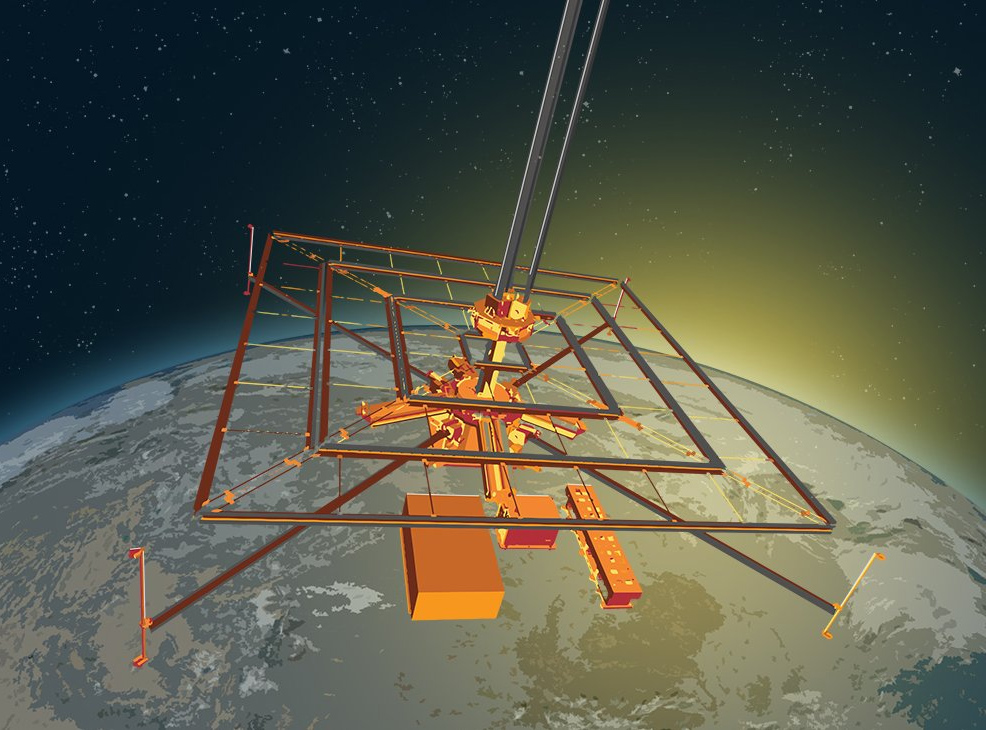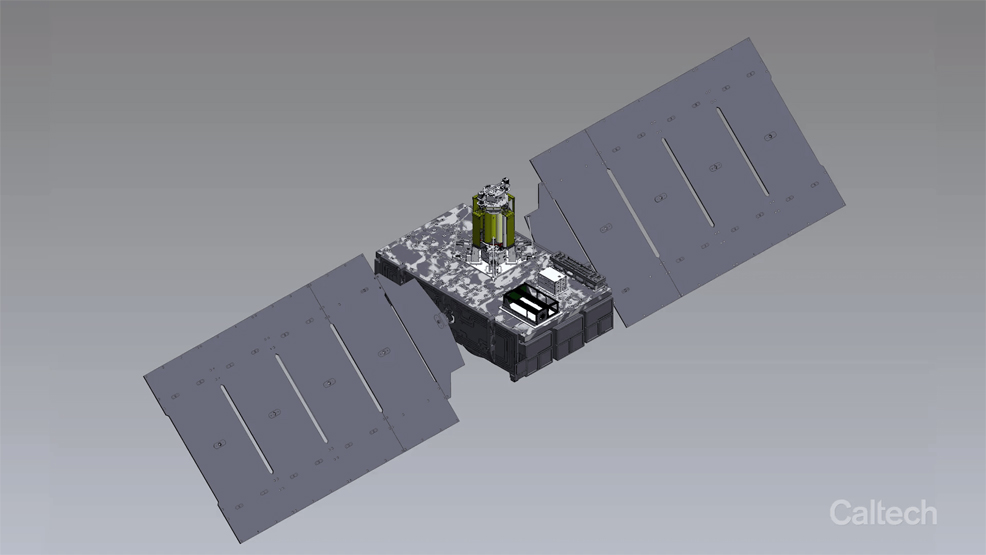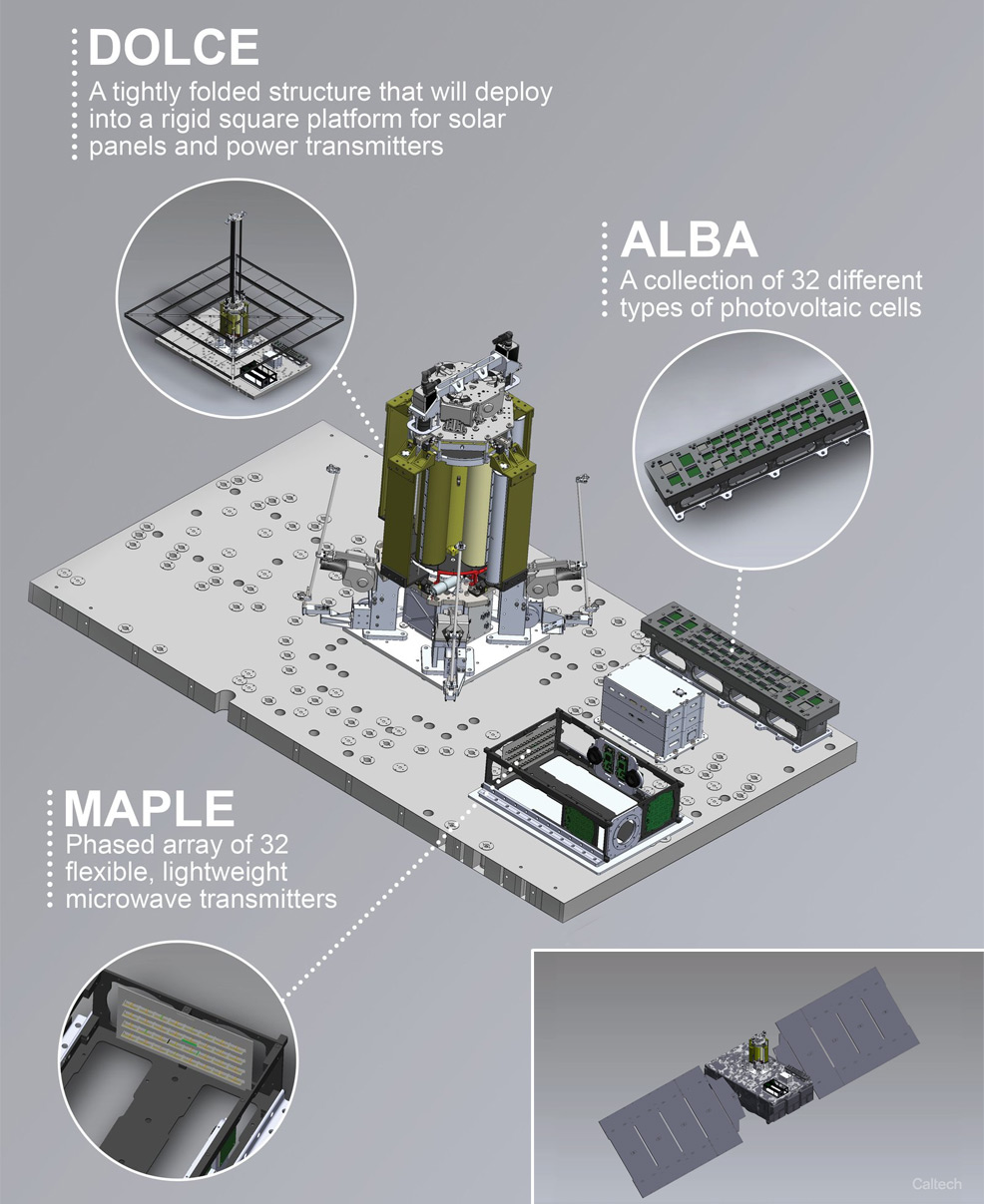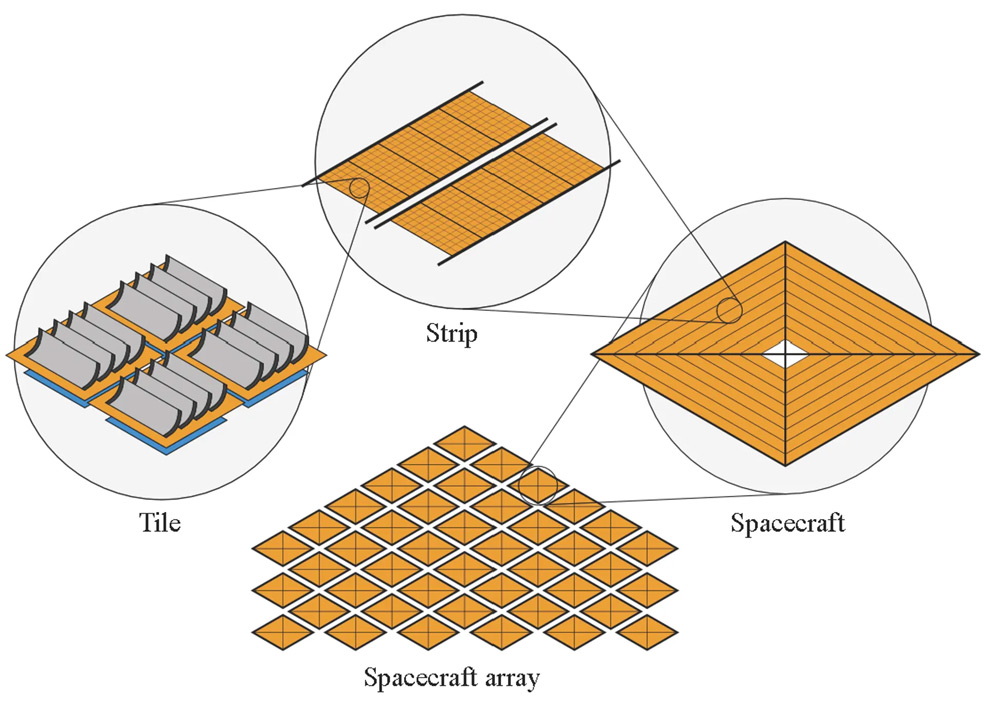
13th June 2023 First ever beaming of orbital solar power The California Institute of Technology reports the first successful beaming of solar energy from space down to a receiver on the ground, via the MAPLE instrument on its SSPD-1 spacecraft.
In recent years, space-based solar power has attracted growing interest from both governments and businesses. Driven by advances in satellite technology, materials science, and energy transmission methods, experts increasingly view it as a feasible option for clean energy that is likely to be a commercial reality within the next two decades. If successfully developed, orbital solar would offer many potential advantages over traditional, ground-based solar. Unlike the latter, it could operate continuously for 24 hours a day, 365 days a year – unaffected by nighttime, weather, or atmospheric conditions. In space, the intensity of sunlight is significantly higher due to a lack of absorption and scattering, meaning that more light can be captured and converted into electricity. Ground-based solar farms also require large areas of land, which can lead to conflicts regarding agriculture and conservation. Space-based systems would never have this issue. Solar energy from space could also potentially be sent to almost any place in the world, making it especially beneficial for remote areas where traditional power infrastructure is difficult or impossible to construct. This same feature could also be useful during disasters or emergencies when ground-based energy supplies may have been disrupted. Finally, space-based solar power would also benefit the space economy in general. Its development and operation would stimulate the growth of many industries including spacecraft manufacturing, launch services, and the developing field of space resources. In the more distant future, humanity's progress to Type 1 on the Kardashev scale is predicted to rely on capturing essentially all of the available sunlight hitting the Earth. The potential future offered by abundant solar energy looks very exciting. Before we get there, however, significant technical, logistical, financial and regulatory challenges need to be addressed. In a highly promising development, the California Institute of Technology (Caltech) has just announced a major milestone on that long road to success, with "detectable power" beamed wirelessly from space to Earth for the very first time. In January, Caltech launched its Space Solar Power Demonstrator (SSPD-1) into a Sun-synchronous orbit, about 525 km (326 mi) in altitude (the average height of the International Space Station, for comparison, is somewhat lower at 408 km, or 253 mi). As pictured below, the experiment sits atop a Vigoride space tug developed by U.S. company Momentus Space.
The SSPD-1 consists of three main components: • DOLCE (Deployable on-Orbit ultraLight Composite Experiment), seen in action in the circular inset, a tightly folded structure that deploys into a rigid square platform for solar panels and power transmitters; • ALBA, seen below and to the right of DOLCE, a strip of 32 different types of photovoltaic cells. This enables an assessment of the types of cells that are most effective in the harsh environment of space; • MAPLE, the core of the experiment, seen at the bottom-left of the platform. A phased array of 32 flexible and lightweight microwave transmitters with precise timing control.
Following its deployment earlier this year, the first results are now available. Although yet to be published in a peer-reviewed journal, they appear to confirm that space-based solar power is a viable technology. "Through the experiments we have run so far, we received confirmation that MAPLE can transmit power successfully to receivers in space. We have also been able to program the array to direct its energy toward Earth, which we detected here at Caltech," said Ali Hajimiri, Professor of Electrical Engineering. "To the best of our knowledge, no one has ever demonstrated wireless energy transfer in space, even with expensive rigid structures. We are doing it with flexible lightweight structures and with our own integrated circuits. This is a first." MAPLE includes a small opening through which the array can beam energy. This transmitted energy, converted into microwaves (without large losses due to scattering or absorption), was detected by a receiver on the roof of the Gordon and Betty Moore Laboratory of Engineering on Caltech's campus in Pasadena, northeast of Los Angeles. The received signal appeared at the expected time and frequency, and had the right frequency shift as predicted based on its travel down from orbit. The power transmission antennas are clustered in groups of 16, each group driven by one entirely custom flexible integrated circuit chip. Hajimiri's team is now assessing the performance of individual elements within the system, by evaluating the interference patterns of smaller groups and measuring differences between various combinations. This painstaking process – which can take up to six months to fully complete – will allow the team to sort out irregularities and trace them back to individual units, providing insight for the next generation of the system. The SSPD-1 is a small experiment, weighing only 50 kg (110 lbs) and measuring two metres across, but is designed to be highly scalable. Future versions could potentially expand the surface area to hundreds or even thousands of square metres.
"The flexible power transmission arrays are essential to the current design of Caltech's vision for a constellation of sail-like solar panels that unfurl once they reach orbit," said Sergio Pellegrino, Professor of Aerospace and Civil Engineering and co-director of the project. "In the same way that the Internet has democratised access to information, we hope that wireless energy transfer democratises access to energy," explained Professor Hajimiri. "No energy transmission infrastructure will be needed on the ground to receive this power. That means we can send energy to remote regions and areas devastated by war or natural disaster." "The transition to renewable energy, critical for the world's future, is limited today by energy storage and transmission challenges. Beaming solar power from space is an elegant solution that [...] promises a remarkable payoff for humanity: a world powered by uninterruptible renewable energy," said Caltech President Thomas F. Rosenbaum.
Comments »
If you enjoyed this article, please consider sharing it:
|










